← Mentorships
 Therianthropy and/or Lycanthropy
Therianthropy and/or Lycanthropy
refers to the metamorphosis of humans into other animals.
Subdivisions include, but are not limited to:
 Lycanthropy (werewolves)
Lycanthropy (werewolves)

Whom are the most common type of therianthropy in mythology. Werewolves live typically in packs:
(1) The alpha pair. Sometimes referred to as the breeding pair, the alpha pair consists of a male and a female wolf. These are the two wolves which will, generally, mate and produce offspring These are the two top-ranking wolves in the pack, and they are dominant over all other wolves in the pack. They often (but not always) direct the activities of the pack.
(2) Mature subordinate animals. These would include the other wolves in the pack who are subservient to the alpha pair. Often, there are two separate dominance orders within a pack - one for males and one for females, but is not always the case in wild wolf packs. The highest ranking wolves among the mature, subordinate animals are often referred to as beta wolves.
(3) Omega wolves. Many wolves packs contain one or a few omega wolves which may be appear to be mistreated by other pack members. Such wolves often avoid the other members of the pack and may be ambushed by other pack members should they try to approach the pack.
(4) Juveniles. These would be young wolves that have not yet secured themselves a position within the pack's hierarchy. However, young wolf pups will "play-fight" and this often results in the formation of a dominance hierarchy among the juveniles. This juvenile hierarchy often changes frequently.
Cynanthropy (weredogs)
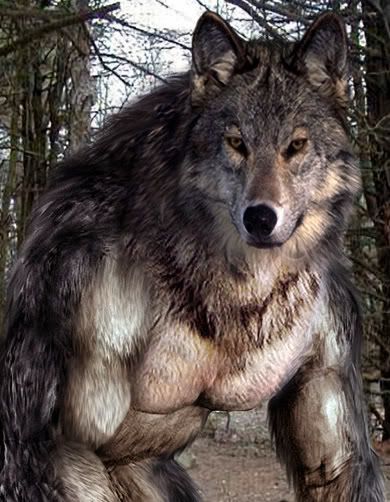
After lycanthropy, cynanthropy is the best known term for a specific variety of therianthropy. They are also known to live in packs.
Ailuranthropy (werecats)
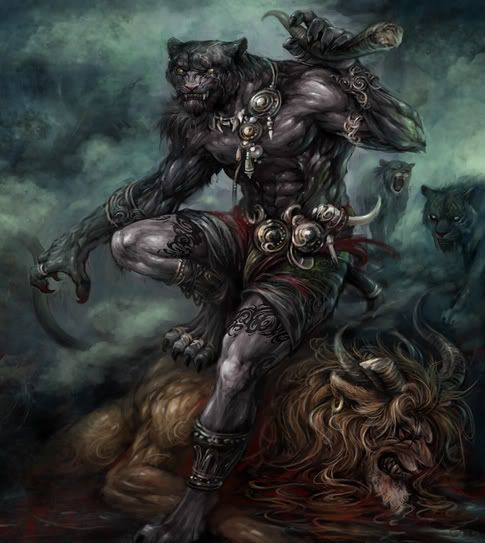
The transformation of each individual animal feline type possesses its own version of the "were" title, for instance werelions, wereleopards, werejaguars, werecheetah, and werepanthers. The general classification of werecat typically applies to all, excluding circumstances between werecats, whom identify each species by the appropriate specific title. Werecats have been represented as typically living in prides regardless of sub-classification.
Skin-walkers and naguals
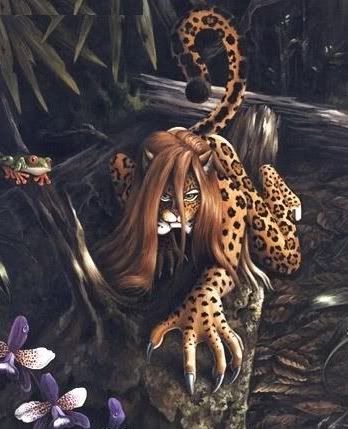
Many Native American legends refer to skin-walkers, persons with the supernatural ability to turn into any animal they desire, though, to be able to transform, they first must be wearing a pelt of the animal. A Nagual or Nahual is a human being who has the power to magically turn themselves into an animal form, most commonly donkeys, turkeys, and dogs; however, are known to transform into other powerful animals such as a jaguar or puma.
Panwere

Panweres have the power to transform into more than one type of lycanthrope. The only place I have been able to find for this form is within the work of my heroine, Laurell K Hamilton in her Anita Blake: Vampire Hunter series.
The one panwere mentioned in the Anita-verse was Chimera who, ironically, was a famous Lycanthrope hunter named Orlando King, who was capable of transforming into a werelion, wereleopard, werehyena, wereanaconda, werewolf, and werebear. The reason for this particular case of lycanthropy is that his pride wanted him to die as a human so he ended up contracting multiple types of lycanthropy, finally ending up in the Amazon where he finally contracted wereanaconda before his first full moon. The tribe he had been sent to kill revered him as a god for his ability to transform to multiple forms. However, in the Anita-verse, most who are contaminated with multiple contagions one usually contradicts the other. It seems that this ability is for very unique individuals, like Anita Blake herself.

Contagion
Lycanthropy is a blood-borne affliction. It can usually be contracted only through a wound from a were who has at least partially shifted to animal type. Injecting lycanthrope blood directly into the body will also spread the disease, and may also be spread metaphysically. Each species-specific strain of the contagion is separate and hostile to all other diseases, including other forms of lycanthropy and vampirism. This hostility is instantaneous from exposure, usually precluding infection from multiple forms of lycanthropy as successive forms are quickly destroyed by the entrenched strain. Under normal circumstances, lycanthropes are therefore immune to all disease.
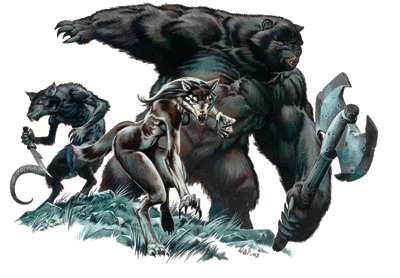
Curse
Once contracted it is said that a curse has been brought upon the body: eternal life. However, this conception is quite false. Werewolves, unlike vampires, are not immortal: in other words, they do not live forever as vampires are so famous for. Some say that werewolves do however have an unnatural life span. As in having very long lives, and live longer than most human beings. There are some reports of ancient werewolves living hundreds of years, although this is not the case for most.
The curse is the mere shape shift in general that within time can be controlled as well as the behavior during the first few moons. The behavior is quite difficult to control as the subject generally forgets the events during the first couple of shifts. The shifting itself is also a curse as the body gnarls and breaks painfully through the change.
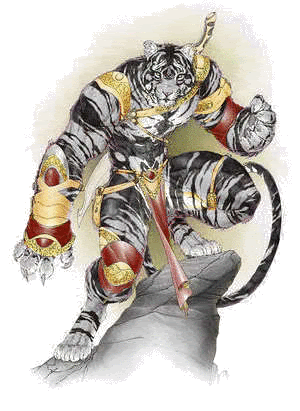
There are an extremely small minority of incidences where multiple forms of lycanthropy appear able to coexist in the same host. There are also apparently ancient forms of vampirism/lycanthropy that can coexist, allowing for lycanthropes who can contract vampirism and retain their lycanthropic abilities after being "brought over". All known hosts carrying these compatible forms of lycanthropy and vampirism are thousands of years old and, until recently, in some form of hybernation.
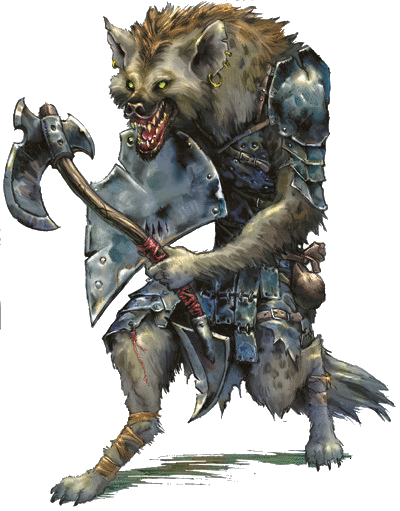
Shape change

Lycanthropes can assume at least two forms - human and animal. Powerful shifters can also assume a "hybrid" form that is bipedal with animal characteristics or even transform a small part of their body at will (for example, "growing" fingers into claws).
Changing between forms takes a great deal of energy; most lycanthropes must feed immediately after changing to animal form and collapse into a comatose state for several hours after returning to human form. Stronger lycanthropes do not need to feed immediately or collapse, but are extremely tired. Powerful lycanthropes frequently can change shape almost at will.
Lycanthropes who spend too much time in animal form may not be able to shift back completely. As a result, some of the lycanthropes have fangs or voices or eyes resembling their animal form, even when in human shape.

Clinical lycanthropy is a mental disorder in which the affected person believes he or she can transform into, has transformed into, or is a non-human animal.
 Contributed by
Contributed by
 2012
2012

REAL VAMPIRES LOVE VAMPIRE RAVE
Vampire Rave is a member of
Page generated in 0.0445 seconds.





















